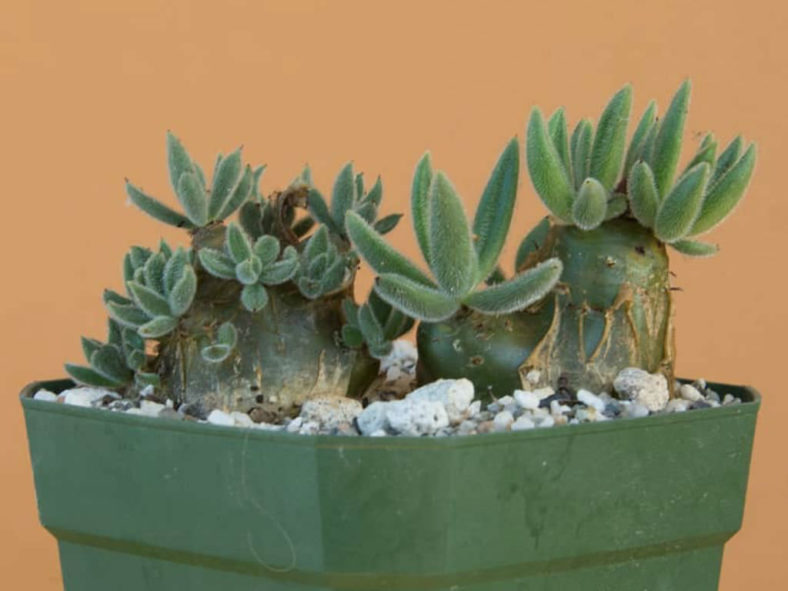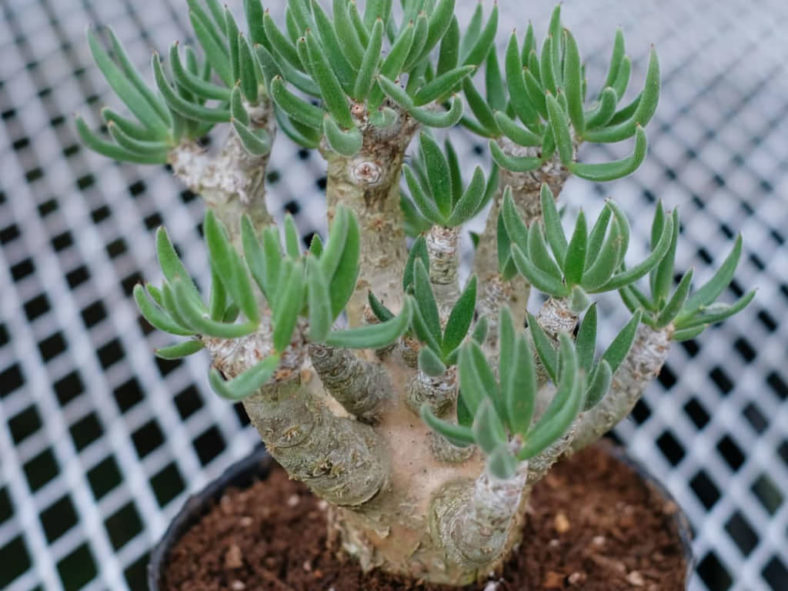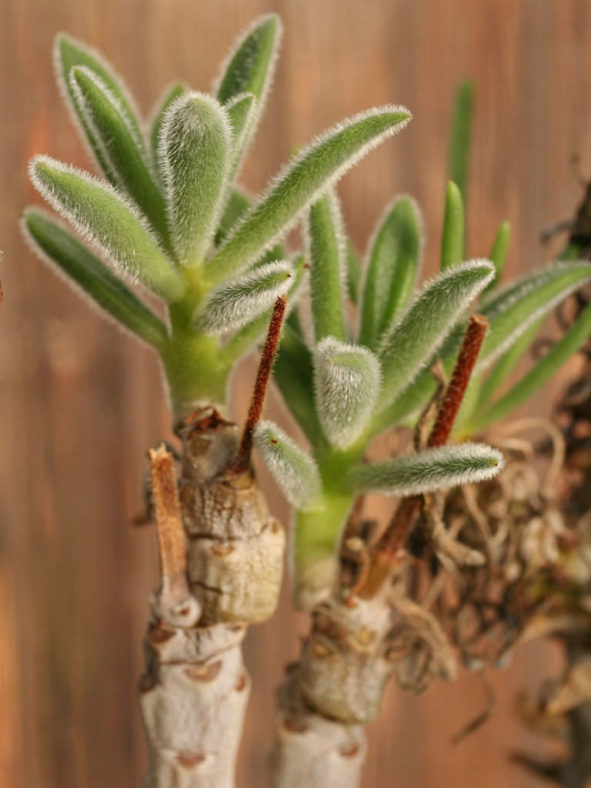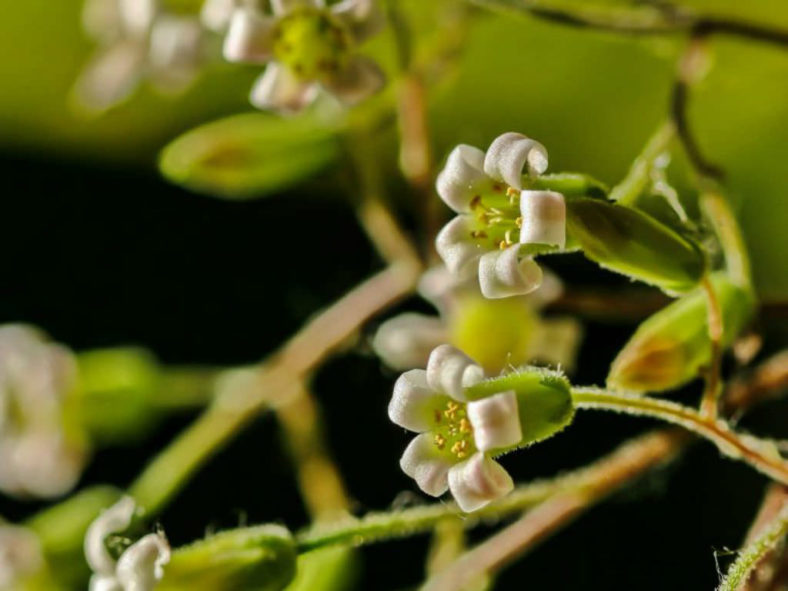Scientific Name
Tylecodon leucothrix (C.A.Sm.) Toelken
Common Name(s)
Bunny Ears
Synonym(s)
Adromischus leucothrix, Cotyledon leucothrix, Cotyledon swartbergensis
Scientific Classification
Family: Crassulaceae
Subfamily: Kalanchoideae
Genus: Tylecodon
Etymology
The specific epithet "leucothrix (loo-KOH-thriks)" means "white hair" and refers to the conspicuous white hairs on the leaves.
Origin
This species is native to South Africa (Western Cape and Eastern Cape, mainly in the Little Karoo).
Description
Tylecodon leucothrix is a small, sparsely branched succulent shrub with a thick main stem and thick, fleshy, narrow leaves crowded at the stem tips. It can grow up to 12 inches (30 cm) tall. The caudex is often tuberous and partly underground, whitish, grey, or dark green, rough with peeling skin, and can reach up to 2.4 inches (6 cm) in diameter. The leaves are lance-shaped with a grooved upper surface, measuring up to 3 inches (7.5 cm) long and up to 0.4 inches (1 cm) wide. They are yellowish-green to green and covered in short white hairs.
The flowers are green to pale yellow with pink to almost white lobes. They appear in summer when the plant usually starts to lose its leaves.

How to Grow and Care for Tylecodon leucothrix
Soil: A well-draining soil mix is the key to healthy Tylecodon. Poor drainage and overwatering most commonly cause root rot in both indoor and outdoor plants.
Light: Tylecodons can survive direct sunlight exposure without problems, but they will grow beautifully in shadow.
Hardiness: Tylecodon leucothrix can withstand temperatures as low as 30 to 50 °F (-1.1 to 10 °C), USDA hardiness zones 10a to 11b.
Watering: As winter is the growing season, Tylecodons require careful watering from winter until the spring. Get the soil wet, and then wait until it is dry before watering again. In the summer, reduce watering to once per month.
Fertilizing: Use liquid fertilizer for cacti and other succulents in winter.
Repotting: You do not need to repot these plants often. You can do it when the container becomes too small or shallow.
Propagation: Tylecodons can be cultivated either by seed or by cuttings.
Learn more at How to Grow and Care for Tylecodon.
Toxicity of Tylecodon leucothrix
Tylecodon species are adapted to avoid animal predation being poisonous. Therefore, keep them away from children, pets, and livestock.
Links
- Back to genus Tylecodon
- Succupedia: Browse succulents by Scientific Name, Common Name, Genus, Family, USDA Hardiness Zone, Origin, or cacti by Genus
Photo Gallery
Click on a photo to see a larger version.


